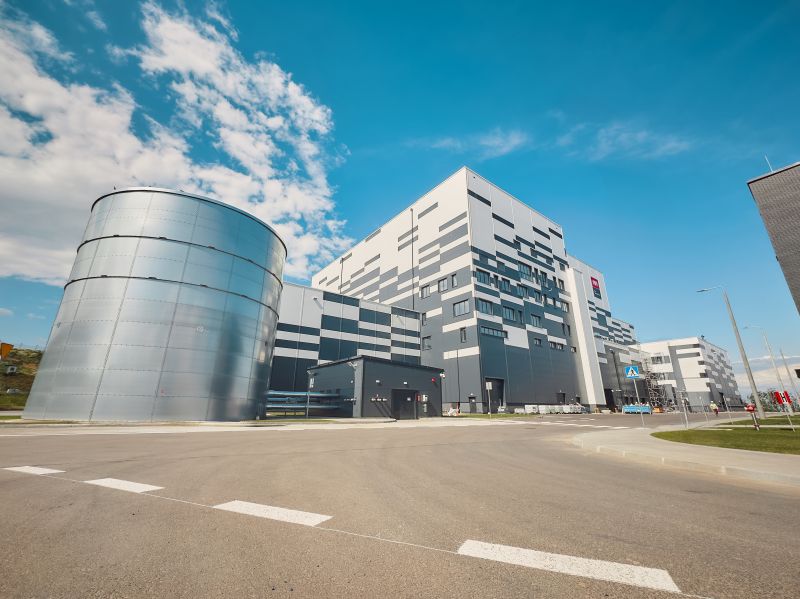It’s time for a serious discussion on EU waste exports
Can Europe treat all its waste in-house? Apparently not! As we all agree that sending European waste far abroad is a wrong action, let’s start an open discussion on the best ways to managing it safely within our borders.

Patrick Clerens, Secretary-General of ESWET, European Suppliers of Waste-to-Energy Technology.
In 2018, Europe produced 2.32 billion tonnes of waste from all economic activities and households. Unfortunately, as the amount of generated waste exceeds the capacity of treatment facilities within the European Union, million tonnes of waste are shipped outside the Old Continent, often going as far as Southeast Asia.
This un-success story is not fading with the years. On the opposite, the EU exports of waste to non-EU countries increased by 75% since 2004, according to EUROSTAT. As recipient countries cannot always adequately treat the waste they receive; landfilling, dumping, and open burning of waste have catastrophic effects on air, soil, rivers, and seas.
Over the last decade, the EU exported millions of tonnes of waste, mainly to Turkey, Malaysia, Indonesia, Vietnam, and India. Luckily, both the sender and the receiving ends are addressing this issue. Welcomed changes are happening in the EU, where rules on plastic waste shipment have been strengthened. In parallel, following the decision of China to phase out waste imports, other countries are planning bans to stop waste-related abuses.
When one gate closes, usually another one opens up, and not always for good. That’s why reports of illegal landfills in Europe are resurfacing, making headlines again in several EU countries. These reports raised the alarm of the INTERPOL, worried about the rise of illicit waste fire and landfills in Europe and Asia. Romania is one of the first countries to witness this trend, with multiple reports of illegal imports intercepted at Romanian ports in the last months.
Eventually, the question remains: if Europe aims to stop sending its waste abroad, can it take care of it by itself?
An opportunity not to waste
The first solution to address this issue is to acknowledge that waste generation is too high and needs to be reduced, and reuse and recycling must be supported as much as possible. Nevertheless, waste generation is still on the rise globally and in Europe, with previsions of a 70% worldwide increase by 2050. That is why sustainable waste management is so important!
Even with all the necessary improvements, not all the waste we generate today is avoidable, reusable or recyclable. It may be because the waste contains pollutants, because it is degraded after many recycling cycles, or even because its design makes it difficult to recycle correctly. Today, in Europe, this non-recyclable waste still accounts for around half of the total municipal solid waste generated.
That is why Waste-to-Energy represents a further step in the circular economy chain: complementary to recycling; it allows to minimise landfills and sanitise non-recyclable waste, avoiding related environmental pollution and its impact on health. In return, Waste-to-Energy plants recover energy (electricity, heat, and steam), and materials (iron, aluminium, copper, steel, and even silver and gold).
Two elements are often brought up to criticise the potential of Waste-to-Energy in sustainable waste management: the supposed weakening of the recycling process and the high CO2 emissions released.
For what concerns recycling, the answer lies in the EU data, and EUROSTAT confirms that the European countries performing well with recycling are also the same that rely on Waste-to-Energy plants for the treatment of their non-recyclable waste.
Another critical point to keep in mind is that many EU countries are still plagued with high landfilling rates. Waste-to-Energy is a crucial alternative for non-recyclable waste treatment in these countries.
CO2 emissions of Waste-to-Energy are a complex topic, and it’s all about choosing between different options. Indeed, they can’t be questioned without considering that Waste-to-Energy prevents non-recyclable waste from being buried in landfills, where waste releases methane emissions up to 84 times more potent than CO2 over a 20-year period. Second, Waste-to-Energy generates energy and recover materials from non-recyclable waste, saving virgin resources and related emissions.
But that’s not all, clearly. The industry is working hard to capture carbon emissions from the plants, a solution that aims to make the technology carbon neutral and even carbon negative. The pilots already running in Oslo and starting in Copenhagen lead the way to achieve this result in the next years.
Sending our waste far from our sight will never be a thoughtful approach for the environment. Emissions are a global problem. Together with the prevention, we have to ensure that all the sustainable waste management options are in place to take responsibility for our waste, here in Europe and under EU standards.
Since February 2021, ESWET is running “The Beauty in the Beast” campaign to raise awareness on Waste-to-Energy’s unexpected properties. The third story: “Not in my Backyard!” is out now to investigate the waste shipment issue and the troubles caused by waste exports outside the EU. Have a look! http://thebeautyinthebeast.eu/not-in-my-backyard/


